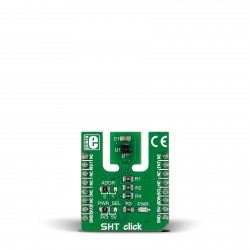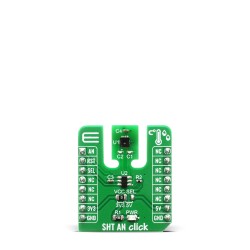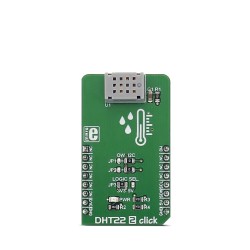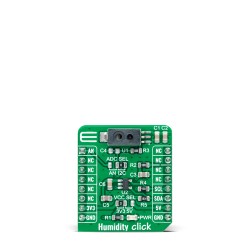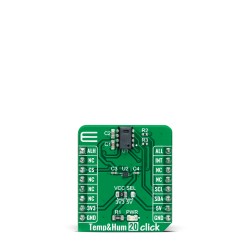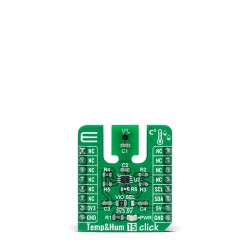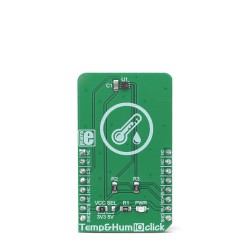In the world of agriculture, precision is key. The right amount of water, at the right time, can make all the difference.
Enter the soil humidity sensor.
This small device, buried in the ground, measures the moisture content of the soil. It provides real-time data to farmers, helping them optimize irrigation and ensure healthy crop growth. But the benefits of soil humidity sensors go beyond just watering.
These devices can prevent over or under-watering, saving both water and energy. They can also lead to increased crop yields, as plants receive the exact amount of water they need.
In the broader context, soil humidity sensors play a significant role in precision agriculture. They are part of a growing trend towards smart farming, where technology is used to improve efficiency and sustainability.
In this article, we will delve into the world of soil humidity sensors. We will explore how they work, why they are essential for modern farming, and how they are improving agriculture.
So, whether you're a farmer, an agricultural professional, or just interested in how technology is shaping agriculture, read on.
Introduction
In agriculture, understanding soil conditions is vital for successful crop production. Among these conditions, soil moisture stands out as a crucial factor. Moisture affects everything from seed germination to plant growth and yield. Farmers need to ensure that their crops receive the right amount of water at the right time. Too much or too little can lead to reduced crop yield or even crop failure. Thus, effective soil moisture management is indispensable.
Advances in technology have provided modern solutions like soil humidity sensors. These tools are revolutionizing the way farmers manage water in their fields. By giving precise, real-time data, these sensors take the guesswork out of irrigation. This is a game-changer for farmers, enabling them to make informed decisions that boost productivity and conserve resources. For many farmers, implementing technology like soil humidity sensors can seem daunting.
However, the benefits far outweigh the initial setup and learning curve. With the ability to monitor water levels accurately, farmers can protect their crops from water stress and enhance their productivity. Moreover, these sensors are part of a broader movement towards smart farming, which leverages technology to improve efficiency and sustainability.
Overall, soil humidity sensors represent a critical step forward in agricultural technology. They offer an easy-to-use, effective solution that aligns with the growing demand for sustainable farming practices. This article aims to explore how these sensors work and the meaningful impact they have on agriculture.
Importance of Soil Moisture Monitoring
Effective soil moisture monitoring is vital for successful agriculture. Moisture levels directly influence plant health, affecting both growth and productivity. Without proper moisture management, plants face stress, impacting their ability to produce fruits and grains. Monitoring soil moisture helps prevent such issues, ensuring that crops thrive.
Water is a limited resource, and efficient usage is essential for sustainable farming. Soil moisture monitoring allows farmers to use water more wisely. By knowing when to water and how much, they can reduce waste and lower costs. This is particularly important in areas prone to drought, where water conservation is paramount.
Furthermore, understanding soil moisture patterns helps farmers adapt to changing weather conditions. It enables them to optimize irrigation schedules, ensuring that crops receive adequate moisture even during dry spells. By integrating soil moisture data with weather forecasts, farmers can make strategic decisions that enhance crop yields and resilience.
Overview of Ground Moisture Sensors
Ground moisture sensors are sophisticated tools that measure the water content in the soil. These sensors work by detecting changes in soil capacitance, resistance, or tension to provide precise moisture readings. They are sensitive instruments designed to offer farmers real-time insights into soil conditions.
These sensors come in various types, including capacitive, resistive, and tensiometers. Each type has its unique method for measuring soil moisture. Capacitive sensors use electrical charge to gauge moisture levels, while resistive sensors measure electrical resistance.
Tensiometers, on the other hand, measure soil water tension, indicating how easily water is available to plants.
Farmers can use these devices in different ways, depending on their specific needs. Some sensors are portable, allowing for spot checks, while others are installed permanently for continuous monitoring. Many of these devices now include wireless technology, enabling remote monitoring and integration with other agricultural sensors.
This connectivity helps farmers gather comprehensive data to improve their water management strategies. In essence, ground moisture sensors are indispensable devices that provide crucial data for making informed agricultural decisions.

Types of Soil Humidity Sensors
Understanding different types of soil humidity sensors is essential for effective soil moisture monitoring. These sensors come in various forms, each suited to specific agricultural needs.
The main types include capacitive sensors, resistive sensors, and tensiometers. Each operates on distinct principles and offers unique benefits.
Capacitive sensors are popular for their ability to provide accurate readings. They work by measuring changes in soil capacitance, which is influenced by moisture levels. These sensors are known for their reliability and are often used in large-scale agricultural operations. They offer a non-destructive way of monitoring soil moisture, which is crucial for ongoing crop management.
Resistive sensors, another widely used type, operate based on electrical conductivity. As soil moisture increases, its conductivity changes, allowing these sensors to measure moisture levels effectively. They are cost-effective and easy to install, making them a favorite among small and medium-sized farms. Despite their simple design, they offer sufficient accuracy for day-to-day use in fields.
Tensiometers provide an entirely different approach to measuring soil moisture. Instead of relying on electrical properties, they measure the tension of water in the soil. This tension indicates how hard plant roots must work to extract water from the soil. Tensiometers are particularly valuable in managing irrigation for specialty crops, where precision is paramount.
Each type of soil humidity sensor has its advantages and limitations. Choosing the right type depends on several factors, including the type of crops grown, soil conditions, and budget constraints. Selecting appropriate sensors can enhance water management, increase yields, and support sustainable agricultural practices.
Capacitive Sensors
Capacitive sensors are renowned for their precision in soil moisture measurement. These sensors utilize an electric field to assess soil capacitance, which changes with water content. As water levels increase, so does the soil’s ability to store electrical charge, providing an accurate moisture level reading.
One of the main advantages of capacitive sensors is their non-invasive nature. They do not damage the soil or disrupt root zones, making them ideal for ongoing monitoring. These sensors are highly reliable and can function effectively under a range of environmental conditions. They are less affected by soil salinity and temperature compared to other types, ensuring consistent accuracy.
These sensors are often integrated into automated irrigation systems. By providing precise moisture data, they help optimize watering schedules. Capacitive sensors are thus instrumental in saving water and reducing irrigation costs, ultimately leading to better resource management and crop yields.
Resistive Sensors
Resistive sensors offer a straightforward and economical approach to measuring soil moisture. These sensors determine moisture levels by measuring soil's electrical resistance. As soil moisture changes, so does its conductivity, allowing the sensor to provide reliable moisture readings.
These sensors have gained popularity due to their affordability and ease of use. They are particularly beneficial for smaller farms or projects with limited budgets. Despite their simpler design, they deliver sufficient accuracy for daily agricultural operations. Installation is easy, and they require minimal maintenance, making them convenient for farmers who need a practical solution without technical complexity.
However, resistive sensors can be affected by soil salinity and temperature, which may influence their readings. Despite this, advances in technology have improved their resilience and accuracy, making them a dependable choice for many agricultural settings. Their versatility allows them to be applied in various soil types, supporting diverse farming practices.
Tensiometers
Tensiometers take a unique approach to soil moisture measurement by assessing soil water tension. This measurement is vital for determining the effort required by plants to extract water from the soil. Tensiometers consist of a tube filled with water and a ceramic cup that makes contact with the soil.
As the soil dries, water is drawn out of the tensiometer, creating a vacuum. This vacuum gives an indication of the soil’s moisture tension. The reading from a tensiometer helps farmers make precise irrigation decisions, particularly for high-value crops where water management is crucial. The significant advantage of tensiometers is their ability to provide insights into the soil-water-plant relationship.
They are especially useful in fine-textured soils and in climates where water scarcity is a concern. However, tensiometers require regular maintenance and refilling to remain accurate. Despite this, they offer valuable data that aids in fine-tuning irrigation practices, ensuring crops receive the optimal amount of water at crucial growth stages.
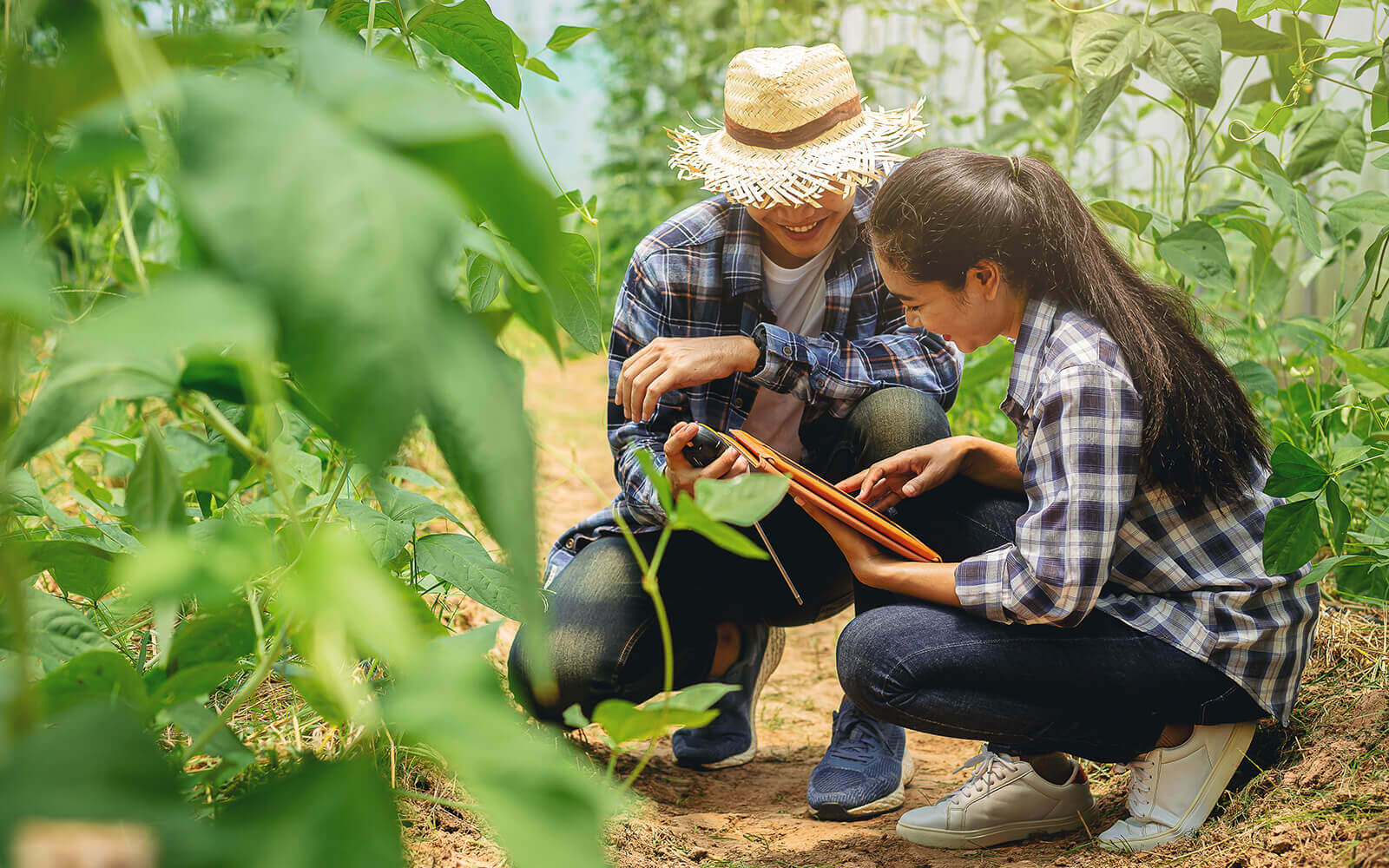
Benefits of Using Moisture Detection Devices
Moisture detection devices, such as soil humidity sensors, offer significant advantages in agriculture. These benefits transform farming practices into more efficient and sustainable systems. Farmers across the globe are increasingly adopting these technologies to optimize operations.
One of the primary benefits is the enhancement of crop yields. By providing precise data on soil moisture levels, farmers can ensure that crops receive the right amount of water. This precision helps in preventing both overwatering and underwatering, which can negatively impact plant health and yield outcomes. More accurate irrigation leads to healthier crops that produce better yields.
In addition to boosting yields, moisture detection devices contribute to water conservation. These sensors enable optimized irrigation practices that minimize water use while maximizing crop production. As water resources become scarcer, conserving water has become crucial for sustainable agriculture. By avoiding excessive irrigation, farmers can protect water reservoirs and reduce their environmental impact.
Cost savings represent another significant advantage of using soil moisture sensors. With precise moisture data, farmers can reduce water consumption, leading to lower utility costs. Additionally, by avoiding water wastage, the risk of soil erosion and nutrient leaching decreases, reducing the need for additional soil amendments. These savings allow for more efficient resource allocation, contributing to overall farm profitability.
Enhanced Crop Yields
Accurate soil moisture monitoring can dramatically improve crop yields. Moisture detection devices provide real-time data, enabling farmers to make informed irrigation decisions. Proper water management ensures that crops receive adequate hydration throughout different growth stages.
These sensors help mitigate risks associated with over or under-watering. By maintaining optimal soil moisture levels, plants can grow more vigorously. This attention to hydration promotes healthy root development and nutrient uptake, leading to increased plant productivity. With improved access to water, crops are more resilient to stressors like drought and heat waves.
Using moisture sensors, farmers can adapt to changing weather conditions. By adjusting irrigation schedules based on sensor data, they can protect crops during dry spells or heavy rains. This adaptability is crucial for maintaining consistent yields, especially in regions with variable climates. Ultimately, moisture detection devices help ensure that crops achieve their full potential, resulting in better harvests.
Water Conservation
Water conservation is a significant concern in modern agriculture. Moisture detection devices play a vital role in addressing this issue. These sensors provide precise measurements of soil moisture levels, enabling targeted irrigation practices. Precision in irrigation significantly reduces water use compared to traditional methods.
By continuously monitoring soil conditions, farmers can apply water only where and when it's needed. This targeted approach minimizes waste and reduces the strain on local water sources. Moreover, by optimizing water use, farmers contribute to the sustainability of their operations and the environment.
Moisture detection devices also help in managing water resources during drought conditions. They allow for the efficient allocation of water to critical areas, ensuring priority crops receive the necessary hydration. This strategic use of water supports agricultural resilience in the face of water scarcity. Thus, these sensors not only support individual farm sustainability but also broader environmental conservation efforts.
Cost Savings
Implementing moisture detection devices can lead to substantial cost savings for farmers. These devices help optimize water usage, directly reducing irrigation costs. Lower water bills are often one of the most immediate financial benefits seen by farmers. With precise irrigation, less water is wasted, decreasing the overall water consumption.
In addition to savings on water, moisture sensors can reduce the need for fertilizers and other inputs. By preventing overwatering, they help maintain optimal soil conditions, minimizing nutrient runoff. Less soil degradation translates to lower costs for soil amendments and treatments. This efficiency extends to labor, as well, reducing time spent on manual watering and irrigation adjustments.
Furthermore, the long-term financial advantages include enhanced crop quality and yields. Healthier crops lead to higher market value and increased revenue potential. By investing in moisture detection technology, farmers not only improve their environmental footprint but also secure better financial outcomes. The cost-effectiveness of these devices makes them an attractive option for farmers seeking to optimize both resource use and profit margins.
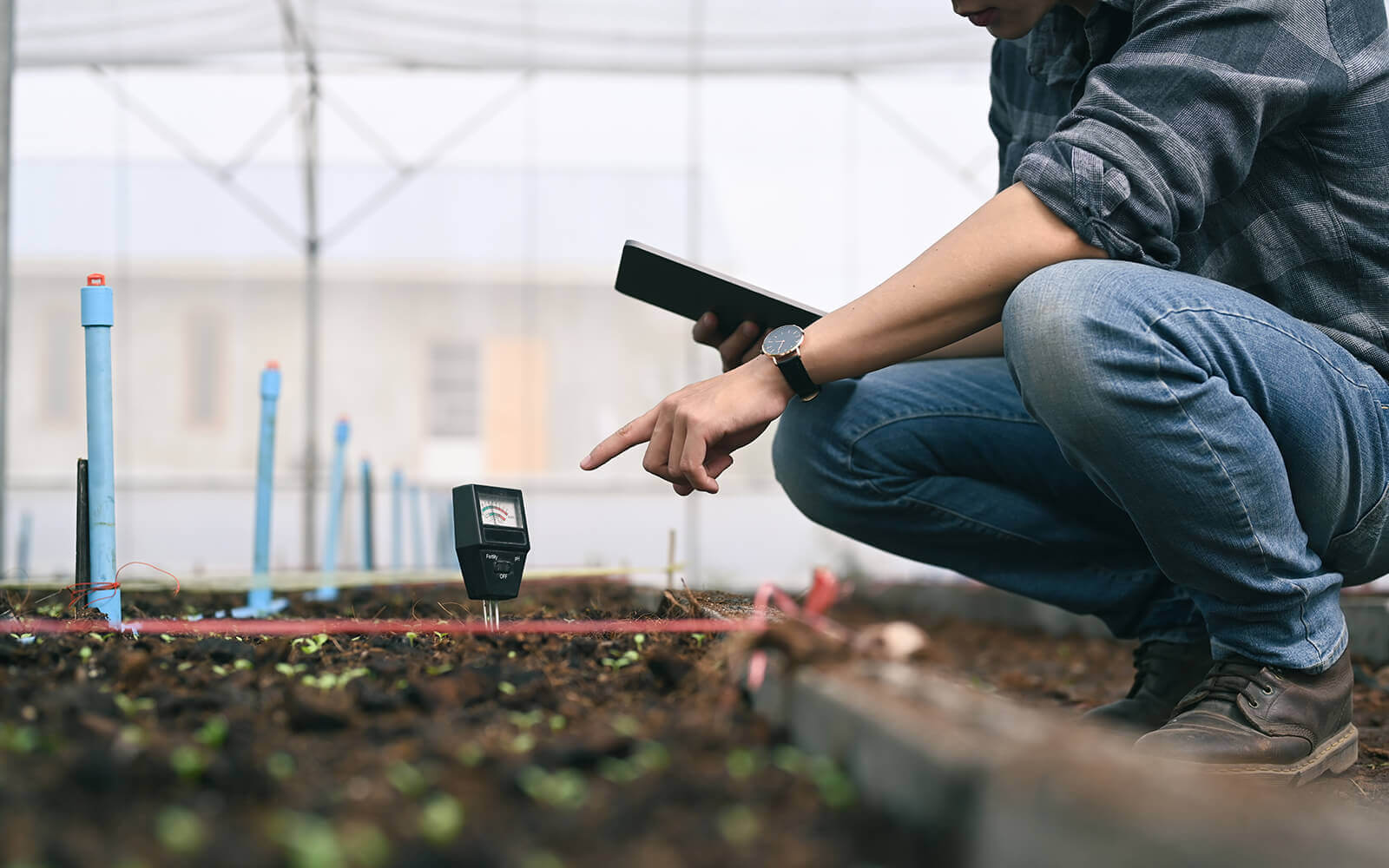
Accurate Soil Condition Monitoring
Accurate monitoring of soil conditions is crucial for successful agricultural practices. Soil humidity sensors provide farmers with essential insights into their fields' soil moisture status. This capability leads to smarter irrigation decisions and healthier crops. With these sensors, farmers can achieve optimal soil conditions without guesswork.
These sensors offer precise measurements of volumetric water content in the soil. As a result, they help farmers identify exact moisture levels at various depths. This detailed information facilitates better water management strategies tailored to specific field needs.
Moreover, accurate soil condition monitoring minimizes the likelihood of water-related issues. Farmers can prevent excessive soil moisture or dryness, which can lead to crop diseases and poor growth. By maintaining ideal moisture levels, the soil's structure and health are preserved. This capability ensures long-term agricultural productivity and environmental protection.
Real-time Data Collection
Real-time data collection is a game-changer in soil moisture monitoring. Soil humidity sensors continuously gather data, providing an ongoing picture of moisture levels. This constant stream of information enables timely and informed decisions for farmers.
Having access to real-time data means farmers can instantly respond to changing conditions. For instance, if rainfall unexpectedly increases soil moisture, irrigation can be halted immediately. This responsiveness helps maintain optimal moisture levels, crucial for plant health.
Additionally, real-time data facilitates better risk management. Farmers can proactively address potential issues like plant stress or drought, minimizing their impact. With up-to-the-minute insights, farms become more adaptable to environmental shifts. This dynamic approach supports both yield improvement and resource conservation.
Integration with Agricultural Sensors
Integrating soil humidity sensors with other agricultural sensors enhances farm management. This synergy creates a comprehensive system that tracks multiple environmental conditions. Farmers gain a holistic view of factors affecting crop growth, leading to more precise farming techniques.
For instance, combining soil moisture data with temperature and light sensors reveals intricate interactions in the field. Such integration helps optimize irrigation schedules, taking into account temperature and sun exposure. This multi-faceted data approach leads to more balanced growth conditions for plants.
Further, agricultural sensors can be connected to automated systems for seamless operation. Farmers can automate irrigation based on real-time data from various sensors. Such integration allows precision agriculture to thrive, boosting productivity. With technology advancing, these integrations are becoming more accessible, making farms smarter and more efficient.
Data Interpretation and Decision Making
Interpreting data from soil humidity sensors is central to informed decision-making in agriculture. These sensors do more than provide raw data; they offer insights crucial for strategic planning. By understanding the moisture patterns, farmers can refine irrigation tactics.
Data interpretation involves analyzing trends and correlating them with other farm activities. For example, consistent low moisture levels during a dry season may indicate a need to adjust irrigation systems. Recognizing such patterns helps prevent potential crop stresses and nutrient deficiencies.
Using data-driven insights supports adaptive strategies during unexpected climate events. Farmers can quickly adjust to protect crop yields against fluctuating conditions. In sum, the strategic use of sensor data promotes efficiency and sustainability in agriculture. This informed decision-making process streamlines operations, minimizes risks, and ultimately enhances farm profitability.
Conclusion
Ground moisture sensors are revolutionizing agriculture by bringing science and precision into farming practices. These devices allow for efficient soil moisture monitoring, crucial for optimizing irrigation and maximizing crop yields. By integrating soil humidity sensors with other environmental sensors, farmers receive comprehensive data to guide their decisions.
The use of moisture detection devices contributes to significant water conservation, which is increasingly important given global water scarcity. They help prevent over and under-watering, preserving this vital resource and promoting sustainable farming practices. Moreover, by maintaining accurate soil conditions, these sensors support better crop health and resilience against environmental challenges.
Adopting this technology results not only in cost savings but also in enhanced agricultural productivity. Real-time data collection and interpretation facilitate swift responses to changing conditions, reducing potential risks. Through these sensors, farmers can optimize resource use, resulting in long-term economic and environmental benefits.
As technology advances, the accessibility and sophistication of soil humidity sensors will continue to improve. Their integration into farming practices represents a key step toward smart farming and precision agriculture.
Overall, embracing these innovations helps ensure a sustainable future for agriculture, aligning with broader goals of food security and environmental conservation.
Ground Moisture Sensing in Action: Products & Projects
Curious how ground moisture sensors are revolutionizing agriculture? We’ve got you covered.
Explore our range of temperature, humidity, and environmental sensing Click boards™ – ready-to-use modules that make it easy to monitor key conditions in smart farming applications. From soil moisture and air quality to ambient temperature and humidity, these sensors are ideal for building efficient, data-driven agricultural systems.
Want to see these sensors in practice? Dive into hands-on projects on EmbeddedWiki. Discover how engineers and innovators are using environmental sensing to optimize irrigation, improve crop yields, and automate field monitoring. Whether you're looking for inspiration or step-by-step guides, it's all just a click away.












 Hydro Probe Click
Hydro Probe Click  SHT Click
SHT Click  SHT AN Click
SHT AN Click  DHT22 2 Click
DHT22 2 Click  Humidity Click
Humidity Click  Temp&Hum 25 Click
Temp&Hum 25 Click  Temp&Hum 20 Click
Temp&Hum 20 Click  Temp&Hum 15 Click
Temp&Hum 15 Click  Temp&Hum 10 Click
Temp&Hum 10 Click 
